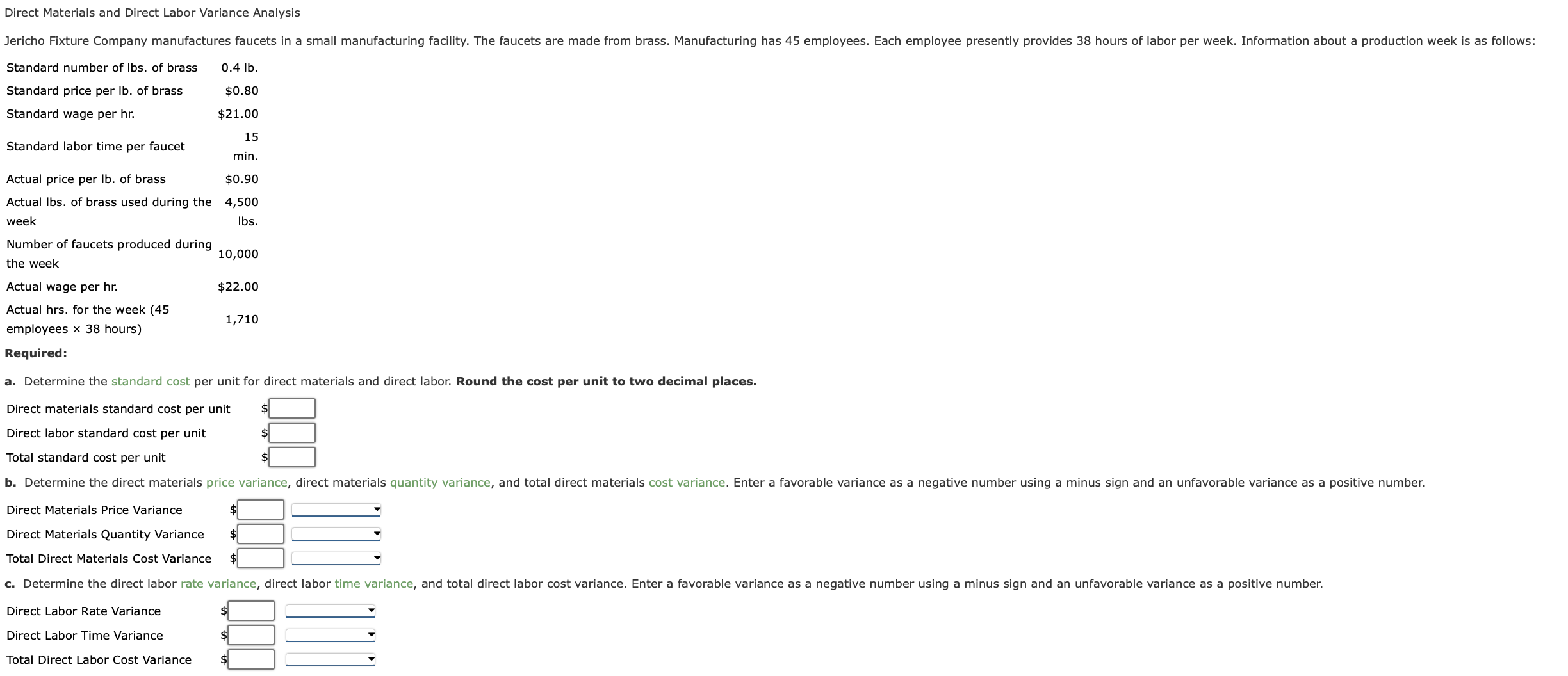If there is no difference between the actual hours worked and the standard hours, the outcome will be zero, and no variance exists. Hitech manufacturing company is highly labor intensive and uses standard costing system. The standard time to manufacture a product at Hitech is 2.5 direct labor hours.
Ask a Financial Professional Any Question
Calculating DLYV can help organizations better control their labor costs, optimize production processes, and improve overall profitability. It also provides insights into the effectiveness of human resource management initiatives. Outcome These corrective actions resulted in a significant what is unearned revenue a definition and examples for small businesses reduction in labor efficiency variance. Company B not only improved productivity but also saw a boost in employee morale as workers experienced fewer interruptions and delays in their tasks. The availability and condition of materials and tools are crucial for efficient labor performance.
The Disadvantages of Direct Labor Mix Variance Are:
- Later in Part 6 we will discuss what to do with the balances in the direct labor variance accounts under the heading What To Do With Variance Amounts.
- He represents clients before the IRS and state taxing authorities concerning audits, tax controversies, and offers in compromise.
- In this case, the actual rate per hour is $7.50, the standard rate per hour is $8.00, and the actual hour worked is 0.10 hours per box.
- Specifically, knowing the amount and direction of the difference for each can help them take targeted measures forimprovement.
Figure 10.43 shows the connection between the direct labor rate variance and direct labor time variance to total direct labor variance. When a company makes a product and compares the actual labor cost to the standard labor cost, the result is the total direct labor variance. However, a positive value of direct labor rate variance may not always be good. Direct labor rate variance must be analyzed in combination with direct labor efficiency variance.
Formula:
The following equations summarize the calculations for direct labor cost variance. Direct labor time variance measures the difference between the actual hours worked and the standard hours allowed for the actual production level. This results in an unfavorable labor efficiency variance of $4,000, indicating that the company used 200 more hours than expected, incurring an additional $4,000 in labor costs. This results in a favorable labor rate variance of $800, indicating that the company saved $800 on labor costs due to lower wage rates than anticipated. As a result of this favorable outcome information, the company may consider continuing operations as they exist, or could change future budget projections to reflect higher profit margins, among other things.
At Finance Strategists, we partner with financial experts to ensure the accuracy of our financial content.
Positive working conditions and high morale can boost productivity, leading to favorable variances. Poor working conditions and low morale can reduce efficiency, resulting in unfavorable variances. Hence, variance arises due to the difference between actual time worked and the total hours that should have been worked. Since rate variances generally arise as a result of how labor is used, production supervisors bear responsibility for seeing that labor price variances are kept under control. Direct labor efficiency variance pertain to the difference arising from employing more labor hours than planned.
Additionally, it is important to ensure that labor costs are monitored and managed effectively. Organizations can use DLYV to identify cost-saving opportunities, measure the productivity of their labor force, and improve operational efficiency. Calculating DLYV is important to assess the productivity of labor and identify areas where operational efficiency can be improved. Background Company B, a large electronics manufacturer, faced challenges with labor efficiency variance. Despite having a highly skilled workforce, they consistently recorded unfavorable efficiency variances. Since the actual labor rate is lower than the standard rate, the variance is positive and thus favorable.
This is an unfavorable outcome because the actual rate per hour was more than the standard rate per hour. As a result of this unfavorable outcome information, the company may consider using cheaper labor, changing the production process to be more efficient, or increasing prices to cover labor costs. Connie’s Candy paid $1.50 per hour more for labor than expected and used 0.10 hours more than expected to make one box of candy. The same calculation is shown as follows using the outcomes of the direct labor rate and time variances. The total direct labor variance is also found by combining the direct labor rate variance and the direct labor time variance.








